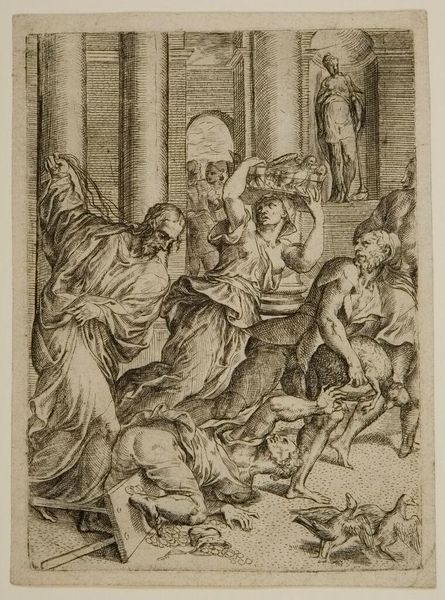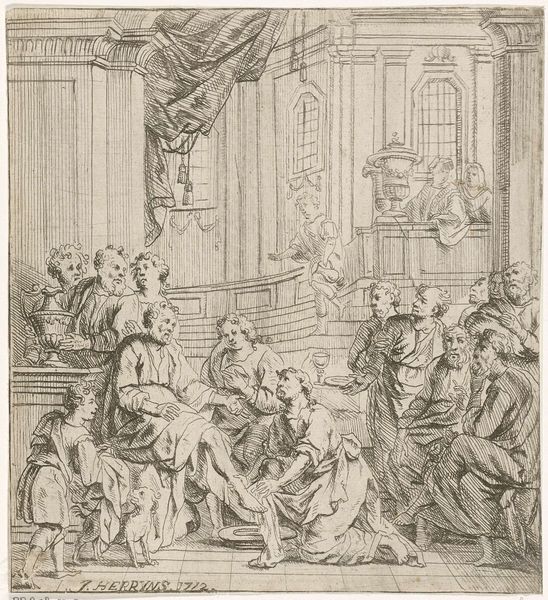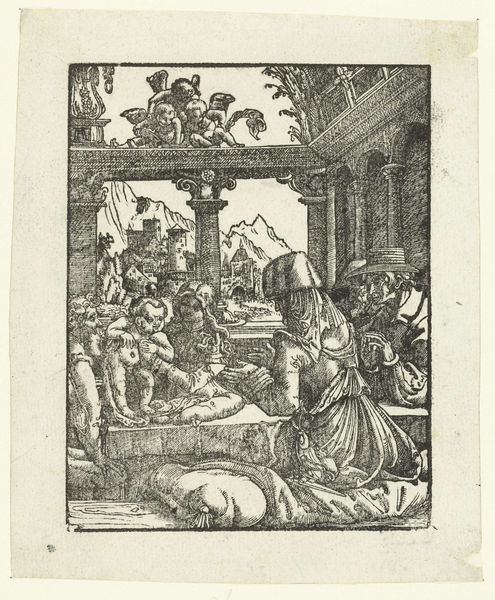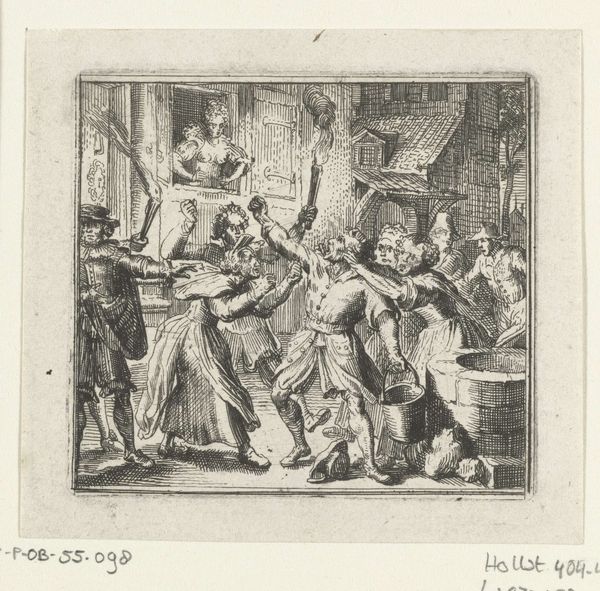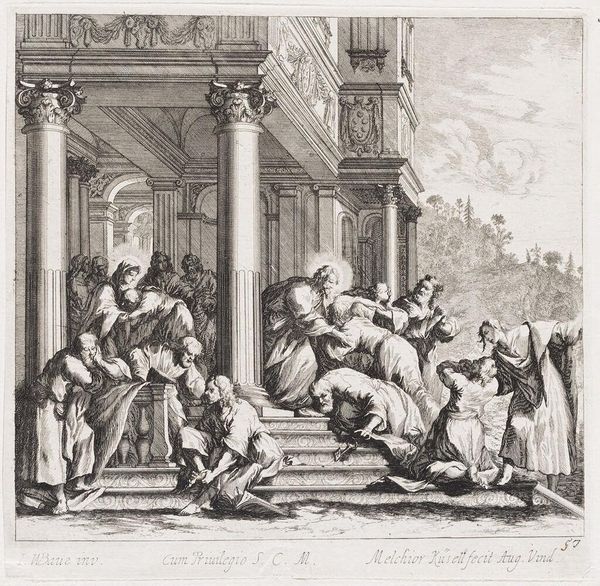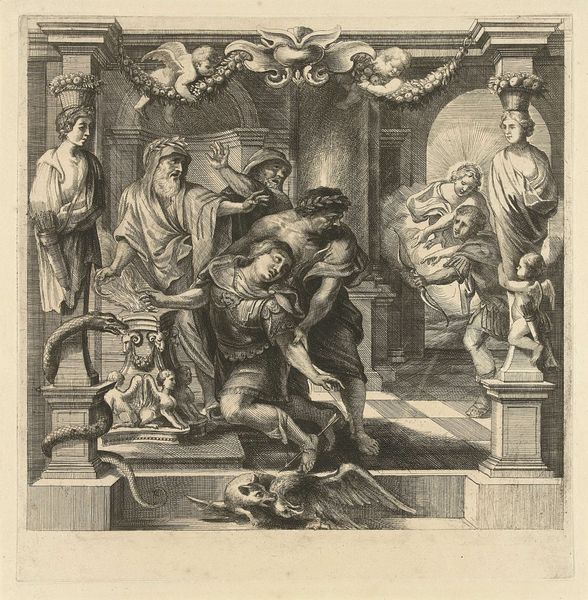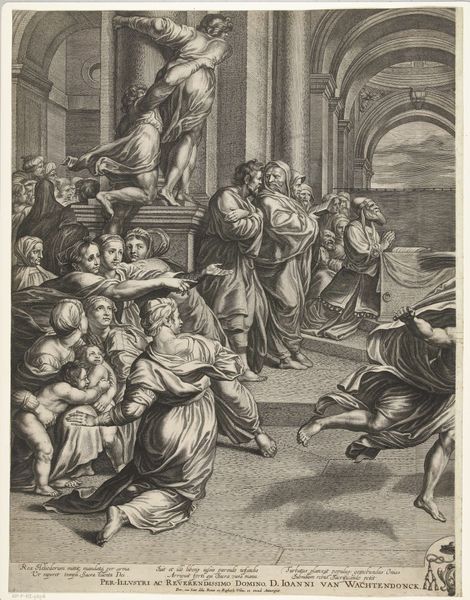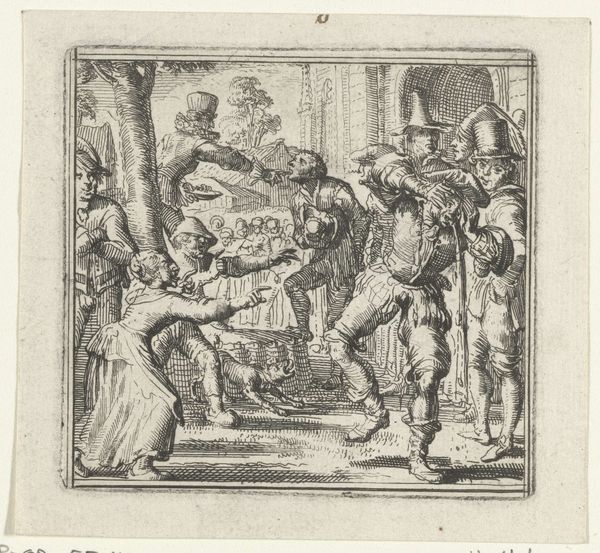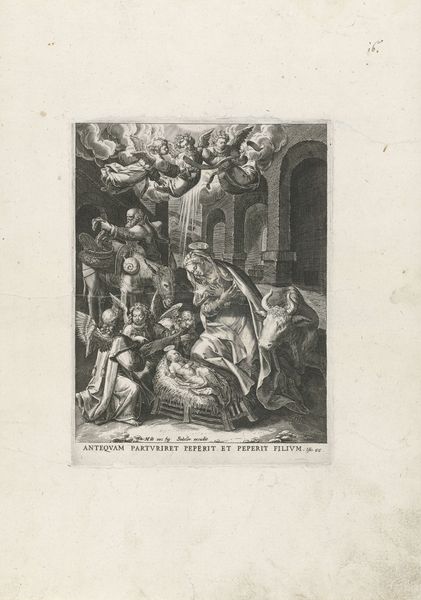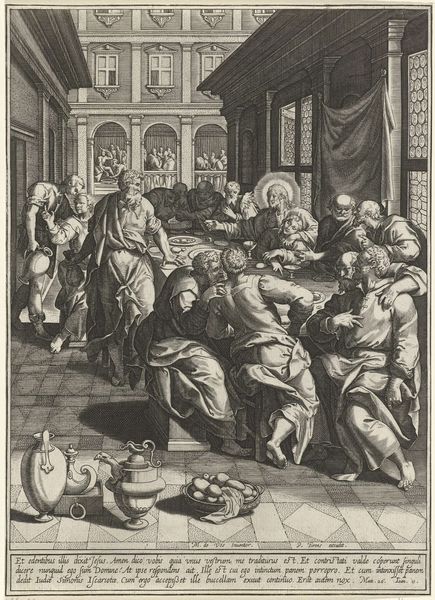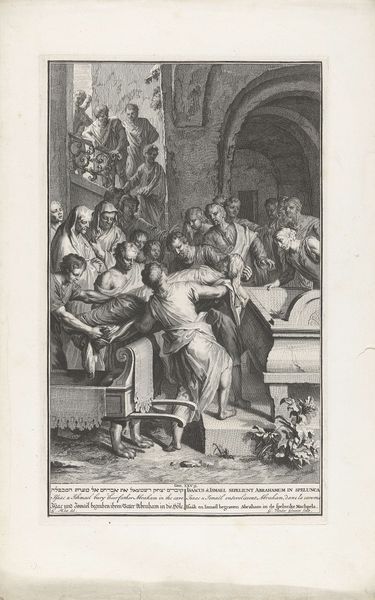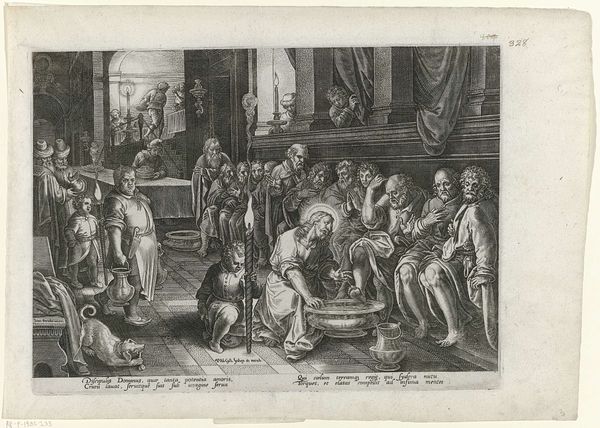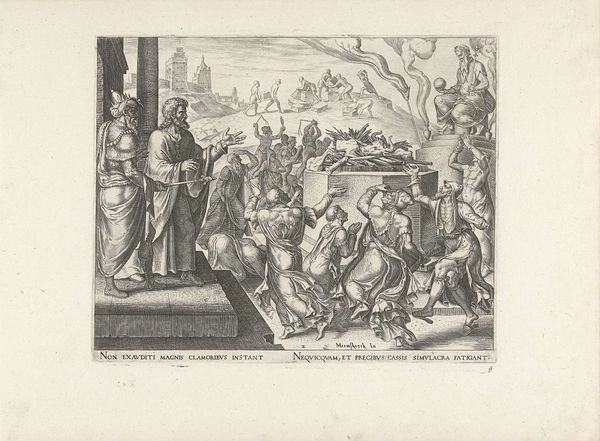
Een overleden vorst wordt op een draagbaar een Romeins gebouw in- of uitgedragen. 1672
0:00
0:00
romeyndehooghe
Rijksmuseum
print, etching
#
narrative-art
#
baroque
# print
#
etching
#
figuration
#
cityscape
#
history-painting
Dimensions: height 117 mm, width 129 mm
Copyright: Rijks Museum: Open Domain
Romeyn de Hooghe created this etching of a deceased ruler being carried in or out of a Roman building. The print encapsulates the intricate relationship between power, gender, and cultural representation during the artist's era. We see a society steeped in ritual and hierarchy. The solemn procession underscores the weight of leadership and the performance of mourning. What does it mean to perform grief? Look at the women featured, their gestures and expressions laden with sorrow. Their emotional display underscores gendered expectations of mourning. The Roman setting evokes an era of imperial power and classical ideals, shaping the representation of leadership and authority. De Hooghe's detailed rendering invites us to reflect on the intertwined threads of personal loss, public spectacle, and cultural legacy. It asks us to consider how the performance of grief both reflects and reinforces societal values.
Comments
No comments
Be the first to comment and join the conversation on the ultimate creative platform.
